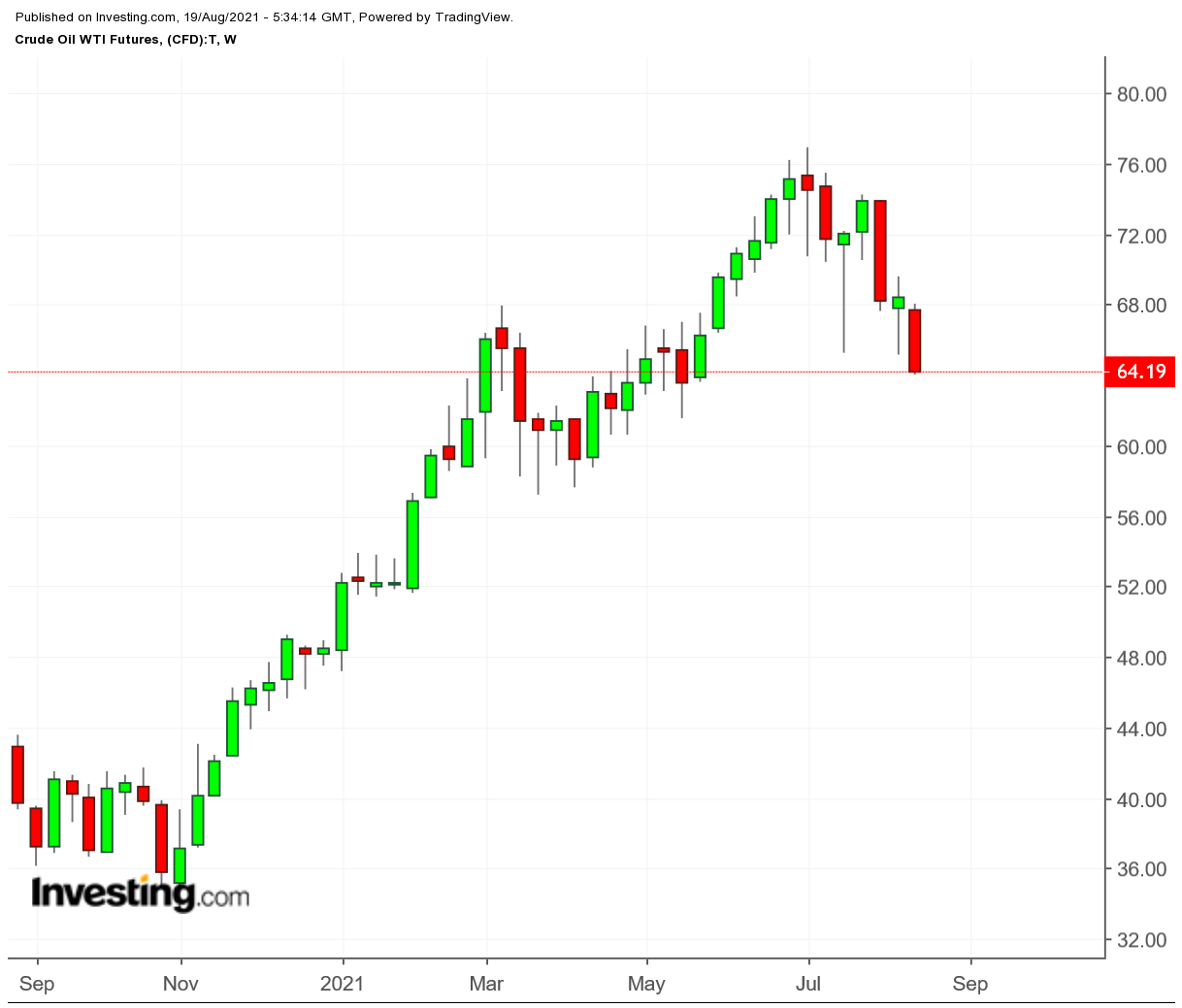Oil prices continued slumping on Wednesday, as the market weighed the dollar's strength compared to other currencies, along with the global rise of coronavirus cases.

As market volatility continues, here are 5 issues traders should be aware of and how they might impact the market:
1. U.S. oil demand and gasoline prices
Data from the U.S. Energy Information Administration (EIA) showed that last week crude oil inventories declined, and gasoline inventories grew slightly. Refineries operated at 92%, which is very strong. However, there are indications that we should soon expect to see a drop in gasoline demand.
Information from GasBuddy indicates that gasoline consumption this week was the weakest since July 11. Consumption on Tuesday was 3.4% below the previous Tuesday, and 2.3% below the average of the last four Tuesdays. This will likely show up in the EIA data within the next few weeks.
This drop is happening because the summer driving season is coming to an end. We should see gasoline prices across the country start to come down, with larger decreases coming in mid-September.
2. IEA downgrades 2021 oil demand forecast
The International Energy Agency (IEA) cut its global oil demand forecast for 2021 due to concern that the spread of the coronavirus Delta variant will hit economic activity and travel. Notably, neither the EIA nor OPEC changed their global oil demand forecasts for 2021. The IEA currently has the lowest number for global oil demand for 2021 (96.2 million bpd) while the EIA has the highest (97.7 million bpd). OPEC’s forecast is closer to the IEA’s at 96.6 million bpd.
Revisions to global oil demand forecasts are typical and reflect the fact that its forecasting is an imprecise exercise that is nearly impossible to do correctly. What is interesting, however, is that the big banks that predicted oil prices would hit $80 in Q3 have not modified their calls.
It's useful to look back at predictions from Goldman Sachs and others from the end of April and evaluate them. Goldman’s prediction was based on an expected massive increase in request that its analysts believed could not be met by existing supply.
We did see a surge in demand this summer that was not met with increased production until OPEC+ increased output by 400,000 bpd in August. However, this was not enough to push oil prices up to the $80 mark. Even though the call for oil is still strong right now, concern that it is about to decline has already pushed prices lower.
3. U.S. Interior Department ends moratorium on new oil and gas leases
Shortly after President Joseph Biden took office, the Interior Department announced a freeze on all new leases on federal land for oil and gas drilling. The moratorium was supposed to last until the department completed a comprehensive review of the program on oil and gas leasing in light of the administration’s climate change concerns.
The review was supposed to be released earlier this summer, but it hasn’t made an appearance yet. In June, a federal judge blocked the moratorium.
This past week, the American Petroleum Institute and several other industry trade organizations filed a lawsuit challenging the indefinite pause on oil and gas leasing on federal land and waters. Apparently, this lawsuit prompted the Interior Department to state that it would resume leasing sales while it opposes the judge’s ruling in court.
However, this doesn’t mean that the Interior Department will resume issuing leases. Typically, new lease sales are held four times a year for federal lands and at least twice a year for offshore leases. There are no plans to hold any new lease sales. This means that the regulatory uncertainty will continue, and traders should not expect that it will impact current U.S. production.
4. Oil demand from China and India
Economic data from China indicates that the Asian nation's economic recovery is slowing more than anticipated. Indicators for industrial activity, consumption and investment all showed less growth than expected in July. China is the largest importer of oil globally, so an economic slowdown is concerning for oil demand worldwide and could depress oil prices.
Traders should keep in mind that economic data reported by China is not necessarily accurate. However, China tends to downplay the severity of economic slowdowns, so the actual slowdown in economic growth could be more severe than the data indicate.
On the other hand, oil demand in India, an up-and-coming oil importer, is showing signs of strength. Domestic air travel in India rose 60% in July. This indicates that travel and demand for fuel in India is returning after a dip in mobility during its recent coronavirus outbreak.
5. Hurricane activity suppressed
A large cloud of Saharan dust is expected to cross the Atlantic Ocean and hit Florida early next week. Such dust storms can suppress the formation of and intensity of tropical storms and hurricanes in the Atlantic.
Hurricane season in the Atlantic Ocean is in full gear, but so far, no storms have threatened the oil and gas producing or refining regions in the Gulf of Mexico. The Saharan dust will continue to provide a reprieve for now.
